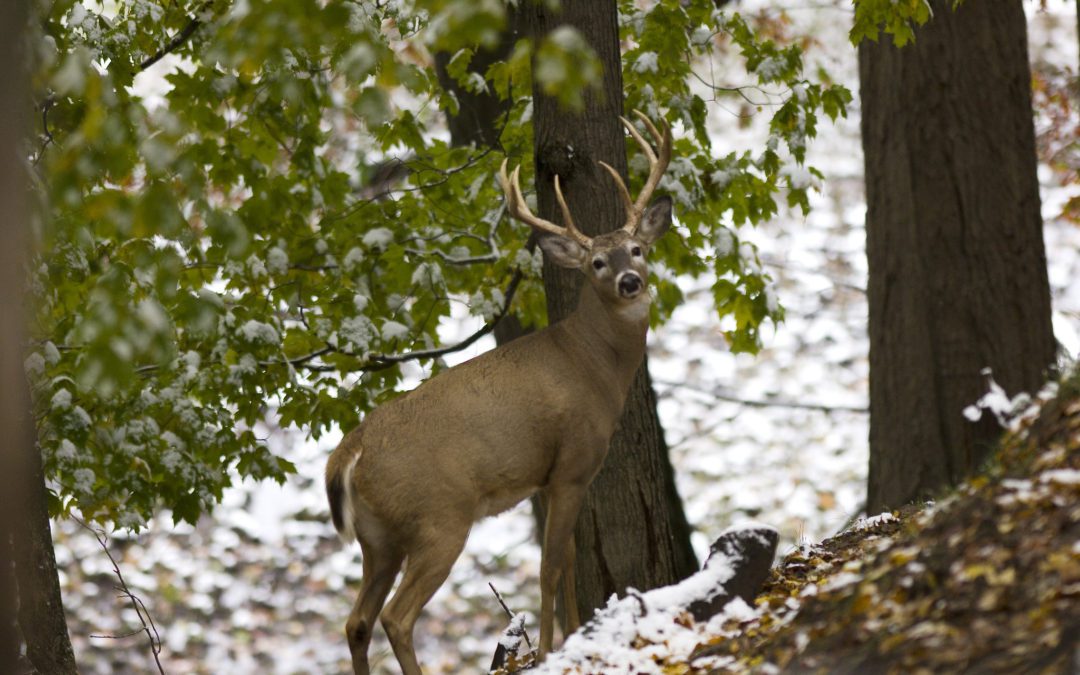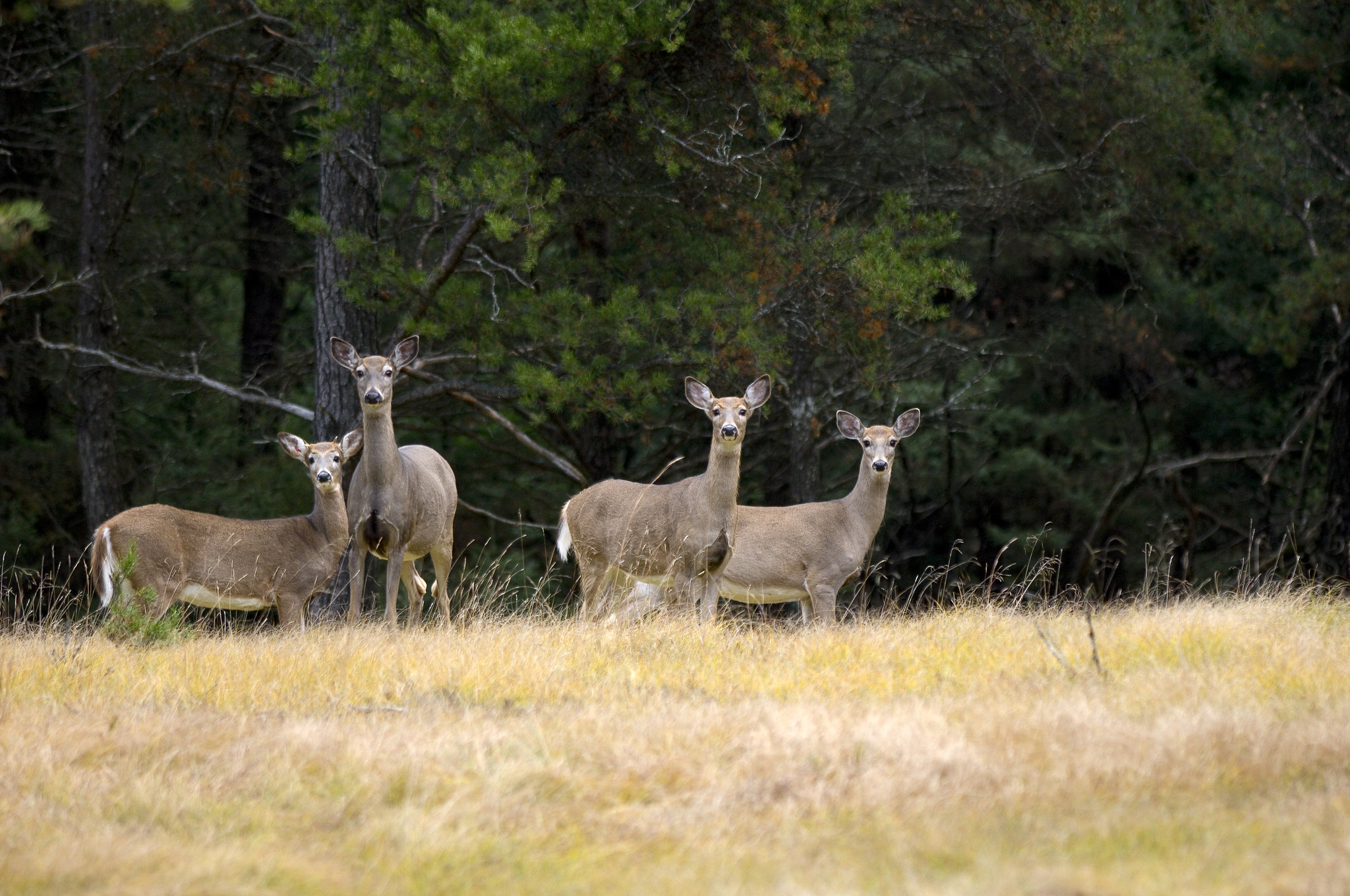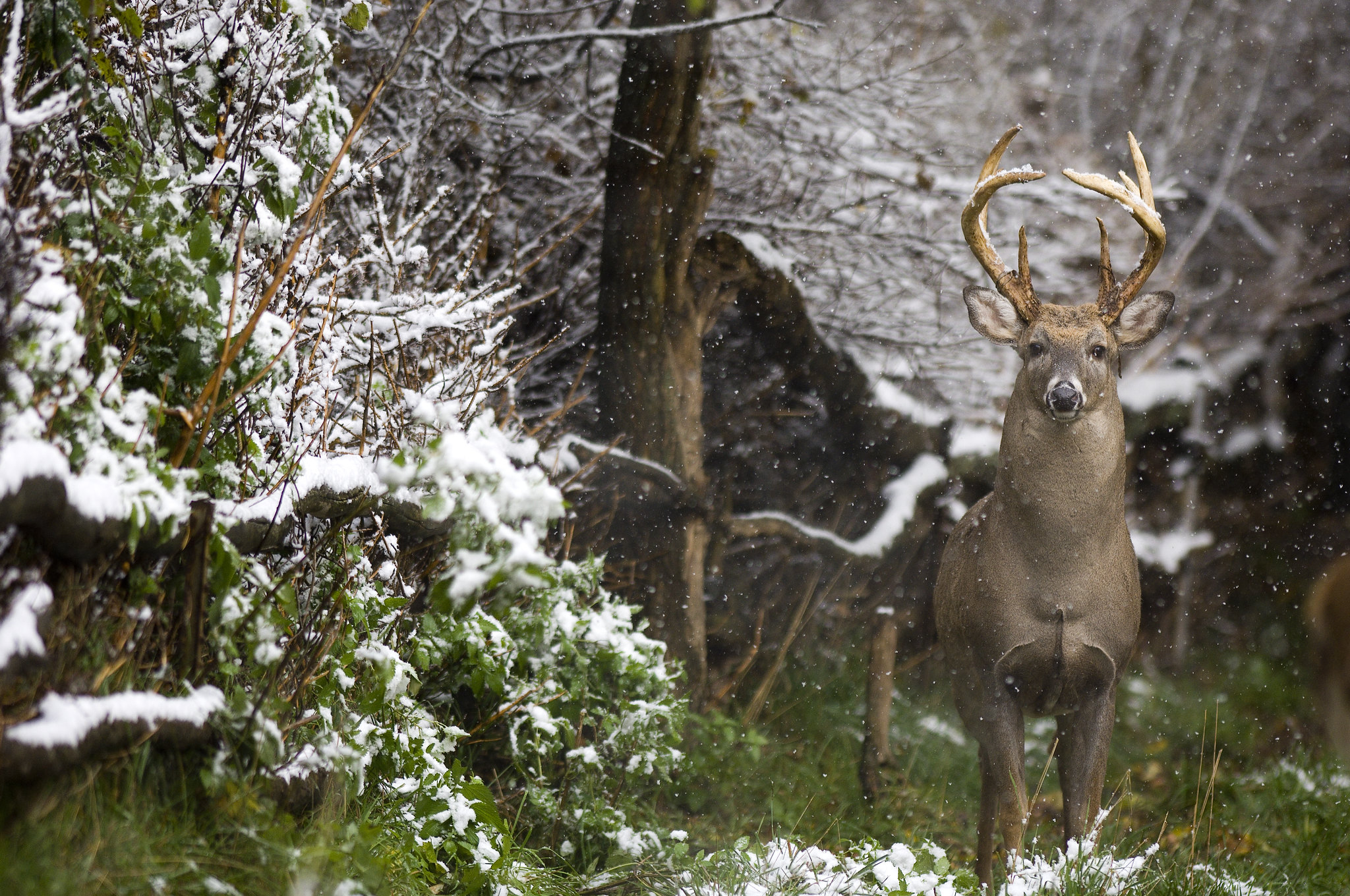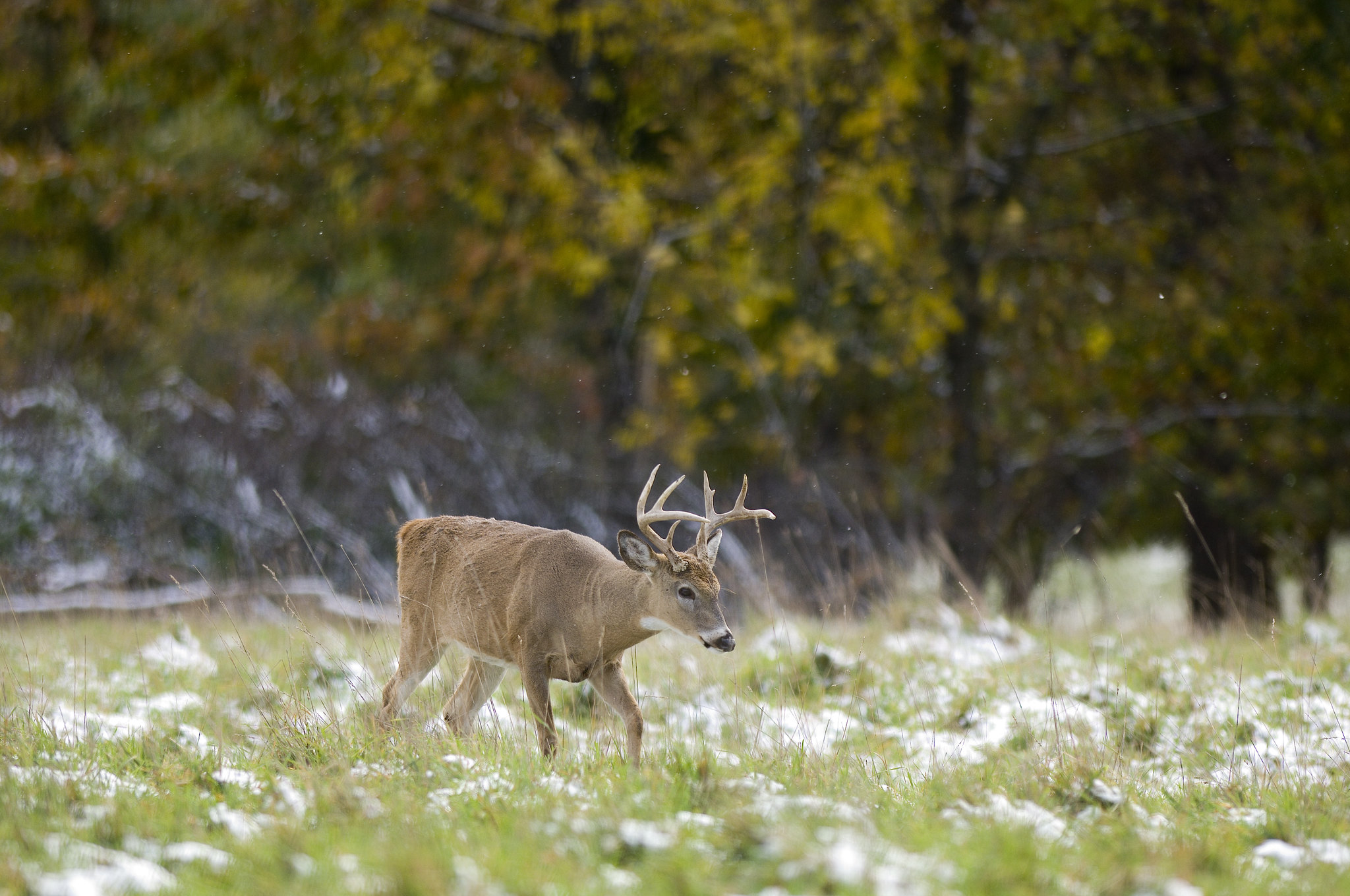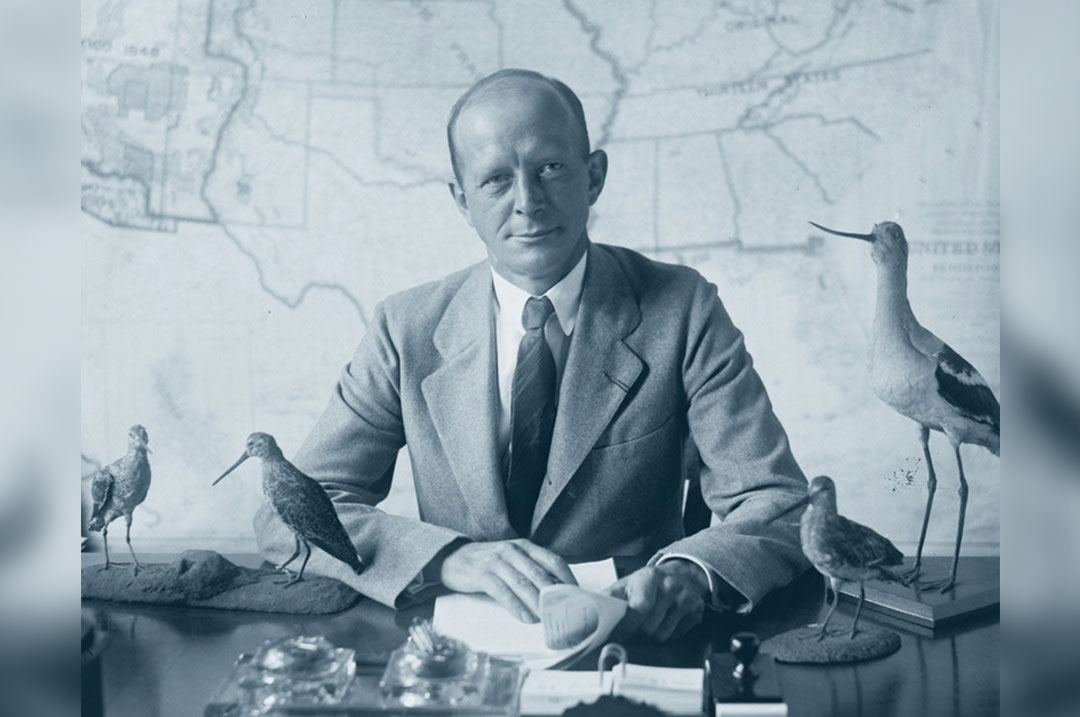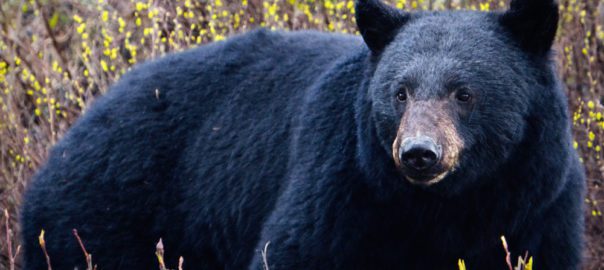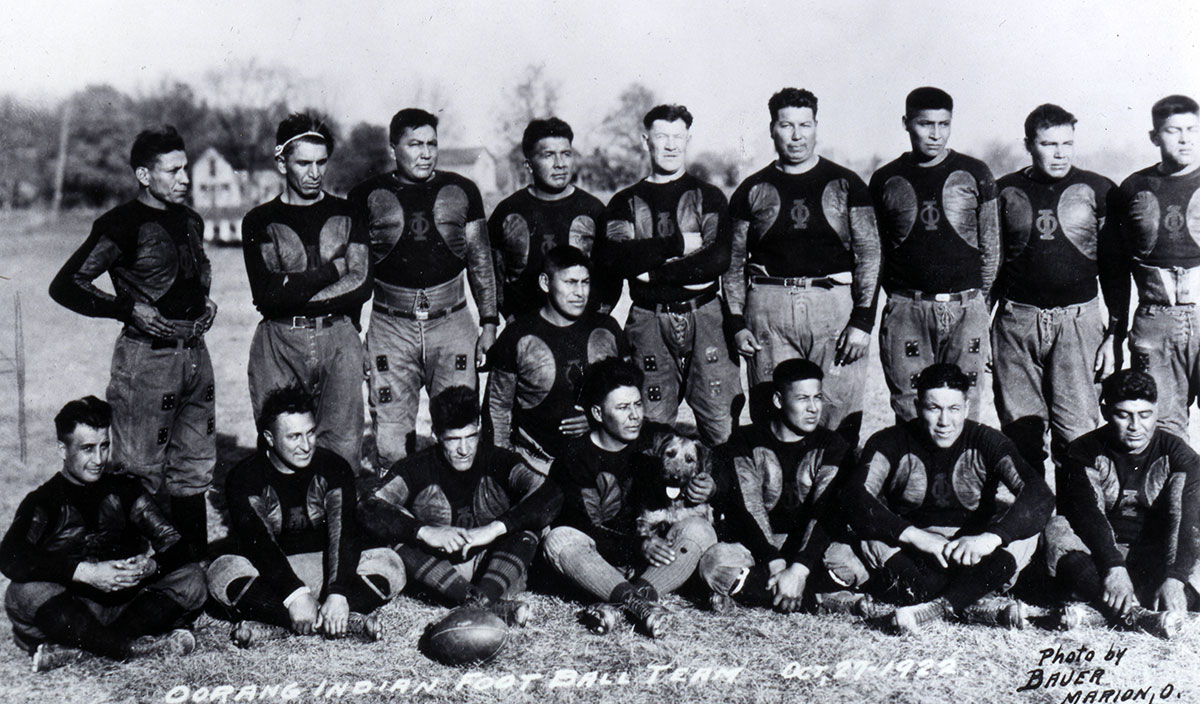Talk to a biologist
Your local biologist is a wealth of information. Wildlife biologists not only have a broad scientific knowledge of deer behavior and ecology, but they are also familiar in tune with the local factors that may influence deer.
Contact your local soil conservation district
Do you have a food plot or planting that did not fare as well as you had hoped this year and could use a boost for next year? Even on the eve of the coming deer season, it is never too early to set things in motion for a great growing season the following year. One of the best places to figure out where to start, or what the next step should be, is your local soil conservation district.
Scouting
Scouting probably has the biggest impact on deer hunting success. If you are unsure what you are looking for or how to go about it, scouting can seem like a daunting task. No matter how large or small the property you are hunting, keen observation and understanding of how and why deer move on that landscape is important. Even making an adjustment of a couple feet here or there can make all the difference in success.
- Digital maps
There are several digital mapping tools available. Some of the best-known navigation tools, like Google Maps, can give you a bird’s-eye view of places you plan to hunt. There are also tools available that show you where private/public land boundaries are. If you are hunting public land in Michigan, a great, free digital tool is Mi-HUNT, which has a ton of information on everything from public/private land boundaries, satellite imagery and cover types (upland, lowland, oaks etc.) to trails, topography and more. - Terrain
Whether reading a map or observing on the ground, knowing the terrain can help uncover where a deer is likely to move. Land features that help provide protection, assist in giving their nose an advantage or lead to an absence of human pressure all can influence a deer to move one way or the other. Learning to read those features can take time but is worth the effort. Some popular terrain features to keep an eye out for are ridges and saddles. A ridge is simply an elevated portion of terrain that extends out like a finger. Deer often will parallel these land features at various elevation points depending on the scenario. A saddle is an area between ridges that creates a depression or low point, often between valleys. There are also many other terrain features that a deer may utilize. The key is to start familiarizing yourself with the landscape to help make sense of the deer movement in the area you’ll be hunting. - Ground Truthing
No matter how much time you spend on digital map scouting, it always pays to get on the ground and see what the terrain really looks like. If you have the time to get out ahead of the season, you can check to make sure your map interpretations are correct and look to find evidence that areas of interest have visible signs of deer movement. - Bedding and feeding
Understanding deer bedding and feeding locations will help uncover deer travel patterns. As straightforward as that seems, figuring out the specifics can take a bit of work. Deer are adaptable and will bed in a variety of environments if they feel secure there. Bedding locations can be found in the middle of cattail swamps or on the edge of an idle field – it’s important to get out and identify those locations. As adaptable creatures, deer will eat a variety of food sources. Depending on factors like the time of year, food abundance and proximity to security, deer may choose one food source over another. Deer could be feeding on anything from recently forested aspen trees to grain in large agriculture fields and many items in between. The important part is figuring out what types of food are in your area and how that relates to bedding areas. Another thing to key in on are habitat edges, areas where habitat transitions from one type to the next, between these bedding and feeding areas. These areas are important to deer and can concentrate a lot of activity. Finally, finding paths to access the places deer will be traveling while remaining undetected can be influential in determining success. Deer may detect you if you follow direct pathways, which may cause them to alter their movements. Understanding the deer’s top defenses (their nose, eyes and ears) and getting into location without alerting one of those senses will greatly improve your chance of success.
- Finding the sign
- Deer Trails
Deer trails, paths with varying degrees of wear depending on how well-traveled they are, offer a look at habitual activity. If you’re in Michigan and you see what appears to be a narrow trail, and it isn’t a walking trail, it is likely a deer trail. The time of year can affect how much these trails are used – you may find a very freshly worn trail in summer that may not be all that active when a food source changes or when some other seasonal factor is introduced. Trying to understand how a particular trail may connect some of the food, cover or terrain features previously discussed can help narrow down some likely spots of interest. Looking for trail intersections, where multiple trails come together or cross, also can be a good way to key in on spots to consider. If you want to get a better idea what may be coming down those trails and when, you can purchase a trail camera and set it up along the trail. - Rubs and scrapes
Depending on the time of year, bucks also will leave telltale signs by making rubs and scrapes. A rub is simply a place where a deer has rubbed the bark off a tree with its antlers. These start to show up in large part later in October and into November, timed with rut activity. Although it can be debated how much stock to put into rubs, they do tell a story of guaranteed past deer activity. Also be on the lookout a rub line, or a series of rubbed trees that form a line that follows a path of travel. Scrapes, on the other hand, are cleared areas of bare dirt that deer also make in late October to early November. These are viewed as more consistent opportunities for repeat visits from deer, particularly bucks. Some scrapes may be just a one-time occurrence, or they can be communal areas frequented by many deer. Even if you are not in that magic window of fresh activity, you may be able to detect last year’s activity, which could be similar to the current year.
- Deer Trails
Picking a spot
Once you have put together more and more pieces of the puzzle, it will be time to find a spot to sit. You may be looking for a place to put a tree stand for the season or just identifying a location to set up a ground blind the day of your hunt. Ideally you should try to find a spot close enough to the area a deer will likely travel to make a comfortable shot, while allowing you to stay concealed. Keep in mind the predominant wind (in Michigan, absent any unique terrain influencing wind direction, it is generally out of the west) to make sure that your location will be downwind of that area you expect deer will be traveling. A good strategy is to identify more than one stand location and hunt a given stand only on days the wind will be blowing away from the area you expect to see deer traveling.
Scent control and pressure
Scouting and spending time figuring out why, how and where deer travel is infinitely important. The more time you invest the better. However, your presence also has an impact. Each area’s dynamics are a little different for how much human activity will be tolerated, but as a rule, each time you are in the deer’s environment you are increasing their awareness and wariness. This can be true of both scouting and hunting a single location often. The safe bet usually is to avoid visiting areas you are actively hunting, or plan to hunt, any more than necessary. It is always a balancing act. To prevent deer from figuring out your pattern instead of the other way around, an increasingly popular method is the “hang and hunt.” This method involves identifying the area or trees you would like to come back to and setting up the stand right before you hunt. This premise is built around selecting many areas to hunt and not being restricted to one area. If hunting a small tract of land, this method may not apply. If you are venturing out onto larger properties or some of the 8 million-plus acres of publicly accessible hunting ground in Michigan, this could be something to consider.
Review the current regulations
In an ongoing effort to combat chronic wasting disease (CWD), there are some evolving regulatory changes that may be in effect where you hunt. Be sure to check the latest hunting regulations in your area, which may influence your strategy.
Get afield
The most important thing you can do this fall is get out in Michigan’s great outdoors and enjoy the deer season. There is one guarantee – that there is always something to be learned. There is no substitute for time spent afield.
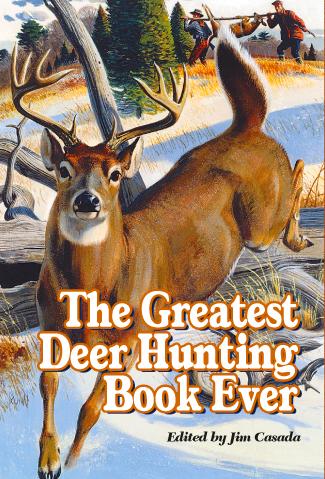 On these pages is a stellar lineup featuring some of the greatest names in American sporting letters. There’s Nobel and Pulitzer prize-winning William Faulkner, the incomparable Robert Ruark in company with his “Old Man,” Archibald Rutledge, perhaps our most prolific teller of whitetail tales, genial Gene Hill, legendary Jack O’Connor,Gordon MacQuarrie and many others. Shop Now
On these pages is a stellar lineup featuring some of the greatest names in American sporting letters. There’s Nobel and Pulitzer prize-winning William Faulkner, the incomparable Robert Ruark in company with his “Old Man,” Archibald Rutledge, perhaps our most prolific teller of whitetail tales, genial Gene Hill, legendary Jack O’Connor,Gordon MacQuarrie and many others. Shop Now

